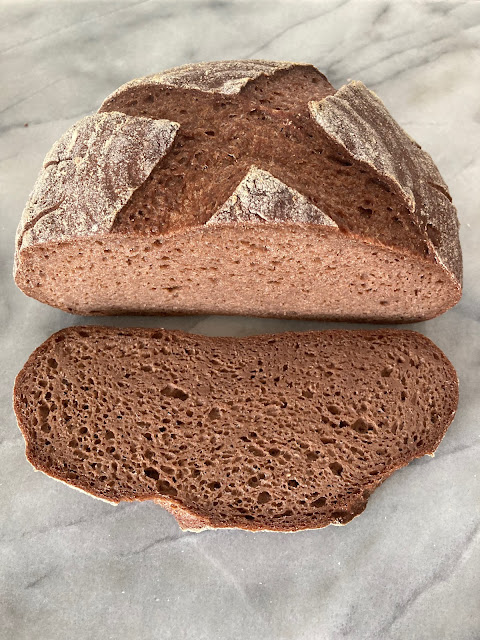I Will Make it Rise!
I've been doing quite a bit of research lately on gluten-free bread making. I have noticed that there is a wide variety of binders, emulsifiers, dough enhancers, and other tricks of the trade that people use to improve the dough. The gamut of ingredients is surprising. I haven't used most of them, partly in an effort to be more purist, and partly due to the fact that I don't know where to start.
Many of these ingredients have conflicting reports on when they are used and what for. For instance, I have one source saying that gelatin is used to add moisture and shelf life to bread dough, and another saying that it adds volume but makes dough brittle and dry. I've heard similar contradictory claims about xanthan gum, which I know to be true from experience. Depending on how you use it, xanthan gum can either help bread to rise and hold its form, or it can make a dough stiff, dry, and unable to expand.
The same can be true of gluten itself: quick breads are all about retarding the gluten formation because it can make a hard product. Bread making strives to develop the gluten to help the dough expand and become elastic. The two concepts seem contradictory, but make sense if you're familiar with cooking with wheat.
The same issues surround gluten-free baking, but we GF bakers don't have hundreds of years of tradition to inform us what circumstances provide which effect. Hopefully the technology that helps us all share our recipes will help us catch up to our glutinous baker friends in creating successful artisan methods for making gluten-free bread.
I have to admit, I love being a part of this process of figuring out how to bake gluten-free.
Here is a list of gluten-free dough additives I've compiled from my research so far:
Many of these ingredients have conflicting reports on when they are used and what for. For instance, I have one source saying that gelatin is used to add moisture and shelf life to bread dough, and another saying that it adds volume but makes dough brittle and dry. I've heard similar contradictory claims about xanthan gum, which I know to be true from experience. Depending on how you use it, xanthan gum can either help bread to rise and hold its form, or it can make a dough stiff, dry, and unable to expand.
The same can be true of gluten itself: quick breads are all about retarding the gluten formation because it can make a hard product. Bread making strives to develop the gluten to help the dough expand and become elastic. The two concepts seem contradictory, but make sense if you're familiar with cooking with wheat.
 |
| My new tip: drop your bread on the floor before baking. |
 |
| Dropped bread results in a superior loaf. |
I have to admit, I love being a part of this process of figuring out how to bake gluten-free.
Here is a list of gluten-free dough additives I've compiled from my research so far:
- gelatin
- pectin
- xanthan gum
- guar gum
- egg replacer (often in addition to eggs)
- chia seeds
- flax seeds
- psyllium husk
- agar agar
- milk powder
- buttermilk
- whey
- modified starches, such as Expandex tapioca starch or Hi-maize corn starch
- baking soda or baking powder
- corn starch
- egg whites
- ascorbic acid
- vinegar (esp. apple cider vinegar)
- oil or other fat (usually only found in richer breads like brioche)
- lecithin
- eggs (usually only found in richer breads like brioche)
- beer or sparkling water for carbonation (to help expand the yeast bubbles)



Comments